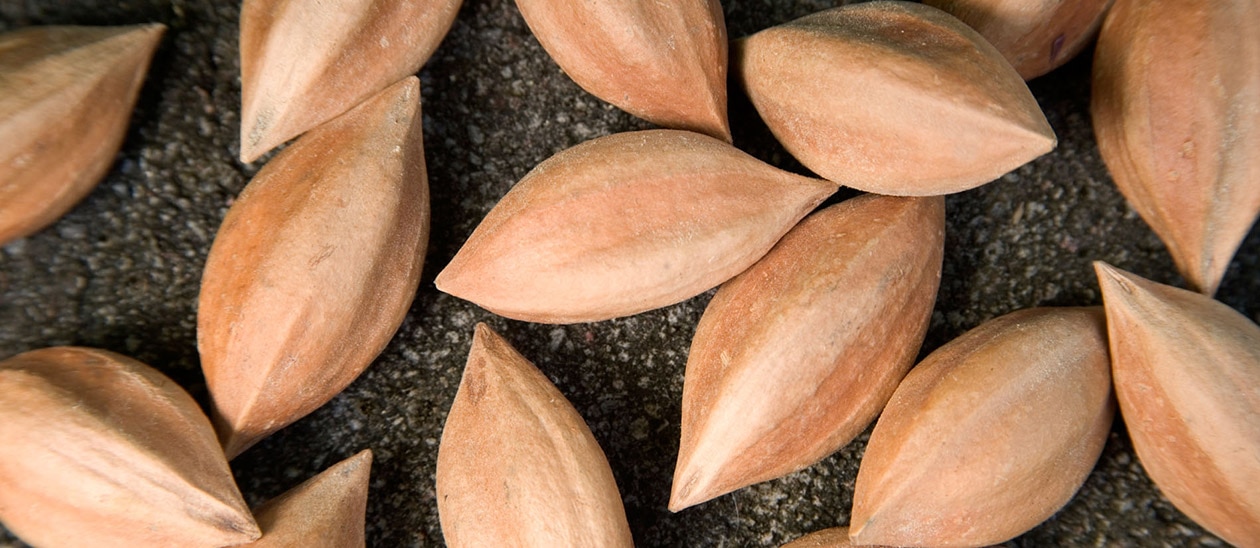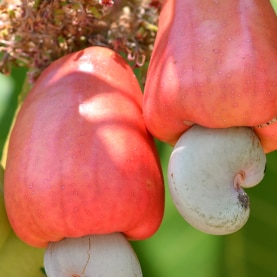Pili nuts
These subtly flavoured nuts grow on pili trees, mainly in the Bicol region of the Philippines.
Pili nuts are mainly grown in the Bicol region of the Philippines. ©Alamy Stock Photo/inga spence
Native to South East Asia, Papua New Guinea and Northern Australia, pili trees (Canarium ovatum) are rustic trees whose fruit resembles large olives around five centimetres in length. Their blackish brown skin sometimes has a purplish tinge. Pili trees grow naturally in the volcanic regions of Bicol in the Philippines. For years, pili nuts have remained relatively unknown outside their native regions, but they are now gradually starting to appear in European and North American shops and are gaining in popularity, notably due to their nutritional value.
In her book Tous les Fruits Comestibles du Monde published in 1999, Marie-Pierre Bonnassieux already highlighted the virtues of pili nuts, which have a high fat and protein content. According to the Food and Agriculture Organization of the United Nations (FAO), they are an excellent source of energy, with a high calorie density of 719 kcal per 100 g, higher than that of macadamia nuts (718 kcal/100 g), Brazil nuts (656 kcal/100 g) or walnuts (655 kcal/100 g)1. Pili nuts are a good source of magnesium, iron, calcium, potassium and zinc and contain a high proportion of saturated fatty acids.
How to eat pili nuts
Due to their very high fat content, pili nuts have a buttery flavour similar to roasted pumpkin seeds with a hint of olive. Their pulp is both smooth and slightly fibrous. In the Philippines, these nuts are usually roasted and sweetened to eat as a snack, or integrated into various recipes. However, to benefit from all the nutritional qualities of pili nuts, it is best to eat them raw and freshly shelled. They can thus enhance a salad or yoghurt.
Where to find them
Pili nuts are still hard to find in Europe, but are sold in various German stores (Edeka Group, Globus, Handelshof, Rewe perfetto), in Monoprix in France, in Carrefour in Belgium and in Manor in Switzerland. They are also available in many online stores in the United States. Just type ‘pili nuts, where to buy’ into a search engine to get a list of sites which sell them.












